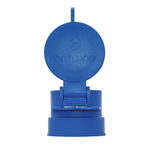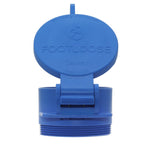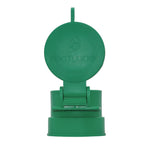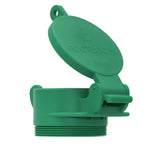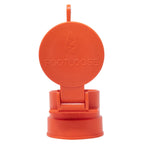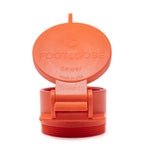You have no items in your shopping cart.
We know why manhole covers are round. But what gives water wells their circular shape?
Around 13 percent of Americans use a water well as their main water supply. If you have a well on your property, you likely aren’t thinking twice about its shape, but a well’s circular foundation plays a crucial role in its function. From providing it with maximum strength to increasing its economic value, round water wells are the most common choice for well builders.
There are several different types of well foundations, but round shapes take the lead nearly every time. In this article, we’ll go into depth about why a circular foundation is the most common and economical option for well construction.
Why Are Wells Round?
Most wells take on a circular shape, and it’s not all just about appearance. Like manhole covers, scientific method plays a huge factor in deciding on the shape and size of a well. Here are a few reasons why wells are almost always round:
1. Digging Method
Before the invention of mechanical digging equipment, wells were dug exclusively by hand. Historically, well diggers would make holes by suspending themselves in the air with a rope attached to a board, which was attached to a long tripod over the hole. The worker would spin around on the rope and dig down until their arms reached out toward the desired distance. Inside the well, a stone wall would be built above bedrock to form two arches, compressing the stones and creating a strong structure.
Nowadays, most wells are dug using a giant rotary drill. The action and shape of the drill make the hole round as it drills straight down into the ground. As wells in the past were lined with stone, modern wells can be lined with metal to achieve the same effect.
2. Circular Wells Are Stronger
Although a square shape might seem like the most logical, circular wells actually feature higher structural strength. As water fills the well, the roundness of the foundation creates even pressure on its inner walls to maintain its structural integrity. All sides are at an equal distance from the center of the well, meaning that the pressure exerted by the water will prevent the well from collapsing and reduce the chances of tilting.
3. Circular Wells Are the Most Economical
Not only do round wells have a superior amount of strength, but they are also less expensive to manufacture. Nearly all wells take on a circular shape due to their efficiency – they can produce a large amount of water using less labor and fewer materials. While other well shapes have been used without issue, the round well is the most common for its ability to give builders the most out of their time, money, and materials.

Can Wells Take on Other Shapes?
Have you ever seen a square-shaped well? How about an octagonal well? Although it may be rare to see any other shape than a circle, wells can take on all sorts of shapes and sizes. Here are some of the different types of well foundations:
- Twin-circular wells:
To build this type of well, two identical circular wells need to be drilled simultaneously and close to one another to be held with a common well cap. Twin-circular wells can be beneficial when the foundation is shallow, and the soil bearing capacity is high. However, due to uneven sinking and loosening of the surrounding soil, it is important to consider that there may be a difference in settlement and tilting between the two wells.
- Double-D wells:
Double-D wells have two semi-circle-shaped wells adjoined by the straight edge - hence the appearance of two back-to-back Ds. These wells improve upon the twin-circular well design in installation and stability. Double-D wells can easily be “sunk” – a term used to describe the drilling of a well. However, bending in the lining of the well can be significant. This is because there is a pressure difference between the inner (straight edges) and outer sides (rounded edges) of the well. However, the square corners at the partition provide some resistance to sinking.
- Hexagonal/Octagonal wells:
Hexagonal and octagonal wells can be built in single or double formation. Although these wells are fairly similar in construction to the Double-D well, many consider double-geometric wells to be better than the former for several reasons. For one, the square corners are eliminated, reducing the amount of bending stress considerably. Due to their increased weight distribution, these wells also have a lesser chance of sinking than Double-D wells.
- Square/Rectangular wells:
Square or rectangular wells can also be built in single or double formation. These wells are typically built when the materials being used necessitate such a shape, such as when flat wood is the only material available to use for lining or when the well is shallow. The drawback of square and rectangular wells is the increased potential for bending of the well walls, which is a reasonably high concern due to their long straight edges and sharp corners.
What Shape Is Your Well?
If you are thinking about building a well on your property, you might want to consider which well shape works best for you. Generally, circular wells are the way to go simply because they are classified as the strongest foundation and have been used time and again without error. However, the well foundation you choose will entirely be dependent on where you will be building it, economic expectations, and the amount of labor you are willing to invest.
For more information about wells, see our extensive guide explaining the different types of well-monitoring equipment.



